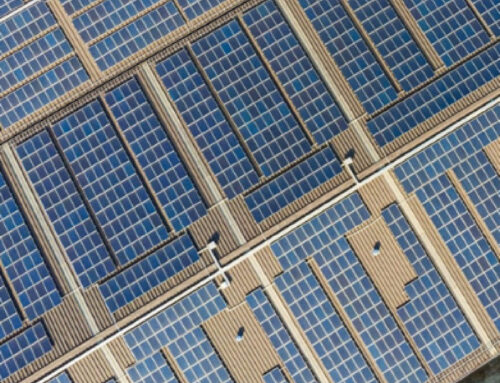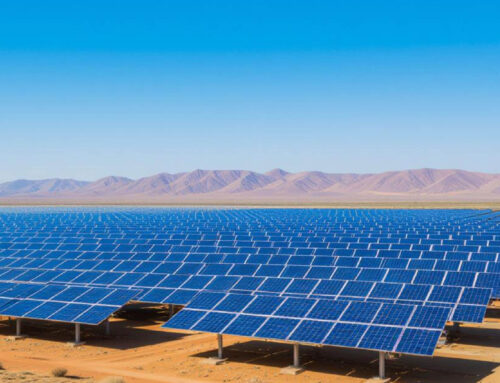
The local manufacturing industry is unsure about the impact of the implementation of Basic Customs Duty (BCD) on solar cells and modules, which is coming soon. The Ministry of New and Renewable Energy announced in March 2021 that BCD on imported solar cells and modules would begin from April 1, 2022.
Solar modules with the HSN code 85414012 will have a BCD of 40%, while solar cells (85414011) will have a BCD of 25%. While manufacturers were unified in their support for BCD on modules, the duty on cells came as a shock. Manufacturers in the domestic traffic area (DTA) are certain that imposing BCD on modules will help them compete with their Chinese competitors, who are comparatively cheap.
Others, on the other hand, are considering the drawbacks of the duty levy. Developers are nonetheless concerned, believing that the duty will cause delays and raise project prices.
The majority of domestic module makers continue to rely on imported cells. They are concerned about profit margins as a result of the levy on cells, which will eventually drive up the price.
Domestic cell manufacturing capacity, which is currently limited to 3 GW, may not be sufficient to meet demand. As a result, the sector expected the government to postpone the cell duty. Domestic manufacturers in special economic zones (SEZs), who have previously benefited from various tax breaks, have a similar concern.
Imposition of BCD – a potential problem for SEZs
The implementation of a 40% BCD on solar modules and a 25% BCD on solar cells has displeased local enterprises with production facilities in SEZs. Manufacturers in SEZs are becoming increasingly concerned, believing that they will either have to close their doors or relocate.
The implementation of BCD, which is expected to begin in April 2022, could force several domestic manufacturers out of SEZs. The principal goal of these special economic zones (SEZs) was to attract foreign direct investment (FDI) and boost exports. While manufacturing units in SEZs benefit from a variety of tax breaks and exemptions, the BCD regime is set to make life considerably more difficult for them.
Mr. Dhruv Sharma who is the CEO of Jupiter Solar and President of Indian Solar Manufacturers Association (ISMA) stated, “Until the law is changed, the SEZ units will have to pay the duty equivalent to the import duty, which will put them on par with Chinese imports and act as a deterrent to their ability to sell in the domestic market.”
“It will be extremely difficult for SEZ firms to sustainably cater to the Indian market since buyers will have the option of buying from them or importing from China because the price parity will be identical.”
To that extent, until the law is revised, SEZ units will not be able to operate freely in the Indian market, and the implementation of BCD would have a significant impact,” he noted.
There are currently 425 formally sanctioned SEZs in the country, spanning all industries. There are 376 SEZs that have been notified, with 268 of them being active.
According to Section 30 of the SEZ Act of 2005, any commodities transported from an SEZ to the DTA shall be subject to customs taxes, including anti-dumping, countervailing, and safeguard duties, as levied on such items when imported under the Customs Tariff Act of 1975.
“The developers are aware that BCD will not be postponed, and they are requesting grandfathering for projects that are already behind schedule.” Future initiatives will be able to meet the expectations of domestic producers. The tariff is on its way, and local producers and customer developers must work together to ensure that everyone benefits,” Mr. Sharma further added.
The need for bringing SEZs at par with DTAs
The National Solar Energy Federation of India (NSEFI) expressed concern over the impact of BCD on projects granted before March 1, 2021, in a letter to Union Power Minister R.K. Singh.
The added cost under the ‘Change in Law’ compensation, according to NSEFI, would cost the end-user at least $0.30 ($0.0040) per kWh and up to $0.50 ($0.0066) per kWh if imported cells and modules were used in these projects.
“The SEZs will have to pay 40% duty on modules and so will have difficulties selling their products in India from April when the BCD comes into place,” Chetan Shah, Chairman, and MD of Solex Energy Limited said of the dilemma of manufacturers in SEZs.
The cells are more important than the modules. Even if the modules are purchased from local manufacturers, the producers will be subject to a 25% duty on cell imports, raising the cost of the modules from 2.50 ($0.033)/W to 3 ($0.039)/W, a significant increase.
The increased cost will not be supported by customers or developers. So, unless the government comes up with a remedy, the business will suffer.
The SEZs are home to over 40% of module manufacturing capacity and nearly 60% of cell manufacturing capacity. As a result, imposing BCD would harm units in SEZs, defeating the goal of the protectionist tax regime.
Stakeholders feel the government should come up with a way to bring SEZs up to speed with DTAs and ensure a level playing field for everybody. Otherwise, solar manufacturing units in SEZs will gradually die out, harming the country’s domestic manufacturing sector and overall solar installations.
“Imposing BCD on solar cells will harm the industry.” Because the benefits of SEZs are no longer economically sustainable, enterprises having SEZ units are relocating their operations outside of SEZs. There is no way out for SEZ units; they will either have to decertify their SEZ designation or focus solely on exports.
There is no other option because they are unable to serve the domestic market,” Shah explained. With no solution in sight, enterprises considering relocating to the DTA are treading carefully due to the high costs of moving and operating in both the SEZ and the DTA at the same time. Another alternative available to producers is to concentrate solely on exporting. The SEZ manufacturers are in limbo as to whether or not the government would evaluate these issues and take action to address them.
BCD on solar cells and the International Market
“The current budget will accelerate the growth of the solar business in the country,” one of the senior executives from a large module maker said, echoing similar comments.
The landing cost of modules with the impact of BCD has yet to be calculated. BCD on modules would reach 50% if further taxes and cess were added. The sector had hoped that BCD on solar cells would be postponed, but this has now been confirmed. The module makers will be harmed by the BCD on cells.
The implementation of BCD will be difficult for manufacturers in SEZs. It will be even more complicated if there is a BCD on a balance of systems (BoS) elements like the back sheet, EVA, and aluminum.”
When it comes to solar cells and modules imported into China, China has the biggest market share at about 90%, followed by Hong Kong and Malaysia. The supply chain is returning to a pre-covid routine as economies progressively reopen and recover from the pandemic.
Stakeholders in the business have expressed concerns that if domestic manufacturing fails to satisfy expanding demand, the industry may be forced to rely on imports. The sector anticipates legislative changes to insulate manufacturing units in SEZs from the impact of the BCD. The module makers, on the other hand, are responsible for the impact of BCD on cells.
Click Here for more updates ornatesolar.com
Resource: Mercom India









Leave A Comment